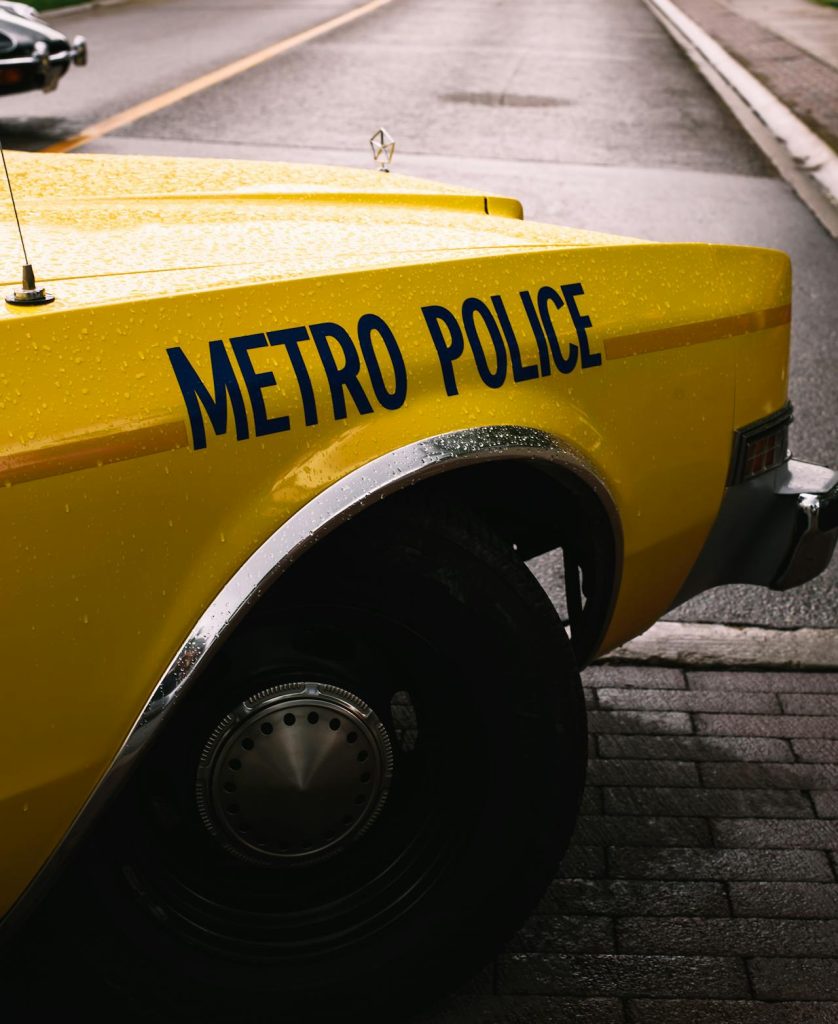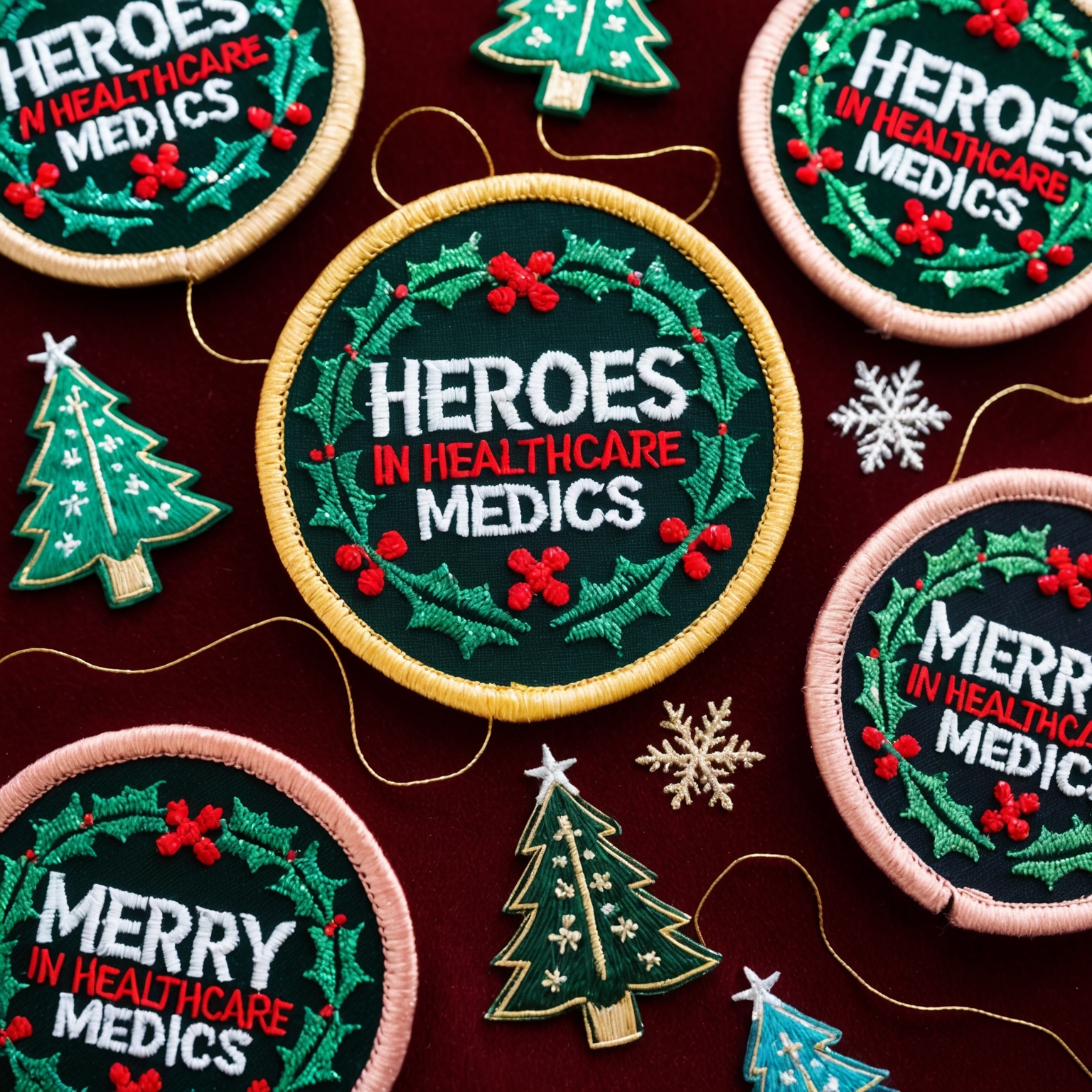Patch design is a critical yet often overlooked aspect of fostering unity, pride, and morale within police departments. These small but significant pieces of embroidered art are not just decorative elements; they serve as symbols of identity, camaraderie, and commitment. A well-designed patch can encapsulate the values, mission, and heritage of a police department, making it a powerful tool for building morale and a sense of belonging among officers. This article explores the importance of thoughtful patch design in law enforcement, examining how it contributes to departmental unity and morale, and offering insights into the key elements of effective patch design.
In law enforcement, the uniform is a powerful symbol of authority, professionalism, and community service. An integral part of this uniform is the patch—a small piece of fabric that carries significant meaning. Police department patches are more than mere identifiers; they are emblems that represent the values, history, and mission of the department. The design of these patches can have a profound impact on the morale and unity of the officers who wear them.
Effective patch design goes beyond aesthetics. It communicates a sense of pride and belonging, reinforces departmental values, and fosters a collective identity among officers. In a profession where teamwork, trust, and morale are essential, a well-designed patch can play a vital role in building a cohesive and motivated team. Conversely, a poorly designed or outdated patch may fail to inspire or connect with the department’s members.
This article delves into the significance of patch design in building police department morale. We will explore the elements that make a patch design effective, the psychological impact of wearing a meaningful patch, and how departments can involve their members in the design process to create a symbol that resonates with everyone. By understanding the importance of thoughtful patch design, police departments can leverage this small but powerful tool to enhance unity and morale among their officers.
1. The Role of Patches in Police Department Identity and Morale
Police department patches serve as a visual representation of the department’s identity and values. They are worn proudly by officers on their uniforms, becoming an integral part of their professional persona. The design of these patches can significantly influence the morale and unity within the department.
Symbolism and Identity
At their core, police patches are symbols that communicate the identity of the department. They often feature elements that reflect the department’s mission, values, and geographic location. For example, a patch might include an image of a local landmark, the department’s founding date, or symbols of justice like scales or a shield. These elements not only distinguish the department from others but also convey a sense of pride and belonging to a specific community.
A well-designed patch can also serve as a unifying symbol for officers. It represents the collective identity of the department, reminding officers of their shared mission and responsibilities. This sense of shared identity is crucial in fostering teamwork and solidarity, especially in a profession where officers must rely on one another in challenging and high-pressure situations.
Psychological Impact on Officers
The psychological impact of wearing a patch that resonates with an officer’s sense of identity and purpose cannot be overstated. A thoughtfully designed patch can boost an officer’s self-esteem and confidence, reinforcing their commitment to the department and the community they serve. It serves as a daily reminder of the values and standards they uphold, motivating them to perform their duties with professionalism and integrity.
Conversely, a patch that feels disconnected from the department’s values or the community’s identity can have a negative impact. Officers may feel less connected to the department or less proud of their association with it. This disconnection can erode morale and reduce the sense of unity among the force. Therefore, it is essential that patch designs accurately reflect the department’s ethos and resonate with its members.
Fostering a Sense of Tradition and Continuity
Patches also play a role in preserving the history and traditions of a police department. Many departments have long-standing traditions and histories that are reflected in their patches. For example, a department that has served a city for over a century might include the city’s founding date or historical symbols in its patch design. These elements connect current officers to the department’s past, fostering a sense of continuity and pride in the department’s legacy.
By honoring the department’s history, patches can also serve as a bridge between different generations of officers. Retired officers, current staff, and new recruits can all find common ground in the symbols and traditions represented in the patch. This shared connection can strengthen the department’s culture and create a supportive and cohesive environment.
2. Key Elements of Effective Patch Design
Effective patch design is a blend of art and symbolism, combining visual appeal with meaningful representation. Several key elements contribute to creating a patch that resonates with officers and the community.
Visual Clarity and Simplicity
One of the most important aspects of patch design is visual clarity. A well-designed patch should be easily recognizable and readable from a distance. This requires a balance between simplicity and detail. While it’s tempting to include numerous symbols and elements, overcrowding a patch can make it difficult to discern and dilute its impact.
For example, using bold lines and clear shapes can help make symbols stand out, while a limited color palette can prevent the design from becoming visually overwhelming. Simple, clean designs are often more effective in conveying a message quickly and clearly. It’s also important to consider the size of the patch; details that may look good in a large format might become indistinct when scaled down.
Meaningful Symbols and Imagery
The symbols and imagery used in a patch should be carefully chosen to reflect the department’s values, mission, and identity. These elements should resonate with both the officers and the community they serve. Common symbols in police patches include:
- Badges and Shields: Representing protection and authority.
- Stars and Stripes: Indicating national pride and service.
- Scales of Justice: Symbolizing fairness and justice.
- Eagles or Other Animals: Representing strength, vigilance, and freedom.
Incorporating local elements, such as landmarks, flora, fauna, or cultural symbols, can also enhance the patch’s connection to the community. For instance, a police department in a coastal city might include a lighthouse, while one in a mountainous region might feature a mountain range. These local references can foster a sense of pride and identity among officers and residents alike.
Appropriate Use of Text and Mottos
Text on a patch, such as the department’s name, motto, or establishment date, provides essential context and information. The choice of font and the placement of text are crucial in ensuring readability and visual harmony. Mottos, in particular, can encapsulate the department’s mission or values in a few impactful words.
For example, a motto like “To Protect and Serve” clearly communicates the department’s commitment to public safety. It’s important that the text is not only legible but also resonates with the officers. The font style should be chosen to match the tone and character of the department—traditional serif fonts might be appropriate for an older, more established department, while a modern sans-serif might suit a progressive, contemporary force.
Color Scheme and Symbolism
Colors play a significant role in patch design, both in terms of aesthetics and symbolism. Different colors can evoke different emotions and associations. For example, blue is commonly associated with law enforcement and can symbolize trust, authority, and calmness. Gold or yellow often represents honor and excellence, while red can indicate courage and determination.
The chosen color scheme should not only be visually appealing but also meaningful. It should align with the department’s branding and be consistent with other elements of the department’s identity, such as uniforms and vehicles. Additionally, the use of contrasting colors can enhance visibility and readability, ensuring that the patch stands out on the uniform.
Balance and Proportion
A well-designed patch maintains a balance between its various elements, ensuring that no single component overwhelms the others. The arrangement of symbols, text, and colors should be harmonious, with each element complementing the others. This balance can be achieved through thoughtful composition and proportionality.
For example, if a patch features a prominent central symbol, the surrounding elements should be scaled appropriately to support rather than compete with the focal point. The use of negative space—areas without design elements—can also help in creating a balanced composition, preventing the patch from appearing too cluttered.
3. The Design Process: Involving Officers and the Community
Creating a patch that effectively represents a police department and fosters morale involves more than just artistic skills; it requires a collaborative and inclusive design process. Involving officers and, where appropriate, the community in the design process can ensure that the final patch resonates with those who wear it and those they serve.
Gathering Input and Ideas
The first step in the design process is gathering input from various stakeholders. This can include department leadership, officers, and even members of the community. Seeking input helps to understand the values, history, and identity that the patch should represent. It also ensures that the design reflects a broad range of perspectives, making it more likely to resonate with everyone involved.
Departments can use surveys, focus groups, or open forums to collect ideas and feedback. Officers can share their thoughts on what symbols or themes they believe are most representative of the department. Community members can provide insights into local symbols or elements that could be incorporated into the design.
Collaborating with Designers
Once the initial ideas have been gathered, the next step is to collaborate with a professional designer who can bring these concepts to life. The designer should have experience in creating patches or similar insignia and an understanding of the principles of effective design.
During the design phase, it’s important to maintain open communication between the designer and the department. Sharing preliminary sketches and concepts allows for iterative feedback, ensuring that the final design aligns with the department’s vision. This collaborative approach helps to refine the design and address any concerns or suggestions from stakeholders.
Reviewing and Refining the Design
After developing initial design concepts, it’s crucial to review and refine them based on feedback from the department and community. This step ensures that the design is accurate, meaningful, and visually appealing. It may involve making adjustments to the symbols, colors, text, or overall composition.
During this stage, it’s also important to consider practical aspects of the design, such as how it will look when embroidered and worn on a uniform. Elements that may work well in a digital design might need to be simplified or adjusted for embroidery. The final design should be clear and recognizable when rendered in thread and worn on the uniform.
Finalizing and Approving the Patch
Once the design has been refined and finalized, it should be formally approved by the department’s leadership. This approval process ensures that the patch aligns with the department’s standards and values. It also provides an opportunity for final adjustments and ensures that all stakeholders are satisfied with the design.
After approval, the patch can be produced and distributed to officers. The presentation of the new patch can be a significant moment, reinforcing the department’s identity and values. It can also serve as an opportunity to communicate the meaning behind the design and the values it represents.
Celebrating and Promoting the New Patch
Introducing a new patch can be an occasion for celebration and pride. Departments can hold a ceremony or event to unveil the new design, explaining its significance and the process that led to its creation. This event can help to build excitement and a sense of ownership among officers.
Promoting the new patch to the community is also important. Departments can use social media, press releases, and community events to share the story behind the patch and what it represents. Engaging the community in this way helps to reinforce the bond between the department and the public, promoting a sense of shared identity and values.
4. The Impact of Patch Design on Departmental Culture and Community Relations
A thoughtfully designed patch can have a profound impact on the culture within a police department and its relationship with the community. It serves as a visual representation of the department’s values and mission, influencing both internal morale and external perceptions.
Building Departmental Pride and Cohesion
Within the department, a well-designed patch can enhance pride and cohesion among officers. When officers wear a patch that they helped design and that accurately represents their department, it fosters a sense of ownership and pride. This pride can translate into a more positive work environment, with officers feeling more connected to their colleagues and more committed to their roles.
A cohesive patch design that resonates with all members of the department can also help bridge divides between different units or divisions. It serves as a unifying symbol that emphasizes the shared mission and values of the department, regardless of the specific roles or duties of individual officers.
Enhancing Community Relations
The design of a police department’s patch can also influence community relations. A patch that includes local symbols or references can create a sense of connection between the department and the community it serves. It signals that the department values and respects the community’s identity and history.
For example, a patch that features a local landmark or cultural symbol can foster goodwill and a sense of pride among community members. It shows that the department is not just an external authority but an integral part of the community. This can enhance trust and cooperation between the public and the police, which is essential for effective community policing.
Communicating Values and Mission
The symbols and text included in a patch design communicate the department’s values and mission. A patch that prominently features symbols of justice, integrity, and service sends a clear message about the department’s priorities and standards. This can reinforce the department’s commitment to upholding the law and serving the community with professionalism and fairness.
Moreover, the patch serves as a daily reminder to officers of the values they are expected to embody. It reinforces the standards of behavior and the ethical principles that guide their work. This constant reinforcement can help maintain high standards of conduct and professionalism within the department.
Conclusion
Patch design is a powerful tool for building morale, unity, and pride within police departments. A thoughtfully designed patch serves as more than just an identifier; it is a symbol of the department’s identity, values, and mission. By involving officers and the community in the design process, departments can create patches that resonate with everyone involved, fostering a sense of ownership and pride.
The impact of a well-designed patch extends beyond the department, influencing community relations and public perceptions. A patch that reflects local culture and values can strengthen the bond between the police and the community, promoting trust and cooperation. It also serves as a constant reminder to officers of the standards and values they uphold, enhancing professionalism and ethical behavior.
As police departments continue to navigate the challenges of modern law enforcement, the importance of symbols like patches cannot be overlooked. They play a crucial role in shaping departmental culture and reinforcing a shared sense of purpose. By prioritizing thoughtful patch design, police departments can enhance morale, strengthen unity, and build a positive and cohesive environment for both officers and the communities they serve.
If you are interested in purchasing high-quality custom patches, feel free to call us at 1-866-903-4903 or fill out one of our FREE quotes here.




